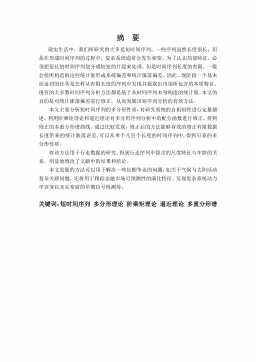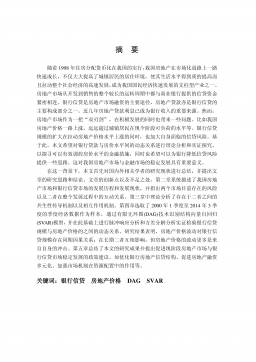棕榈加筋上海粘土强度试验研究
VIP免费
`
摘 要
上海地区粘土分布广泛,粘土具有高含水量,大孔隙比,高压缩性以及低强
度等特征。工程建设以及地基强度均需要对粘土进行处理后才能满足要求,继而
进行下一步的工程;同时随着建筑垃圾的不可再生以及环境污染的问题加剧,越
来越需要环保建筑材料的诞生。
本文选用棕榈这种环保材料对上海粘土进行加筋,分别采用直剪慢剪试验,
无侧限抗压强度试验和劈裂试验对棕榈片加筋上海粘土的抗剪,抗压以及抗拉强
度进行探究,再利用 SPSS 统计分析进行方差检验与回归分析,可得到如下结论:
棕榈加筋土不仅可以提高上海粘土的抗剪,抗压和抗拉强度,而且能够改善
上海粘土的抗变形能力。
直剪慢剪试验中,最优加筋率为 0.50%,最佳筋材长宽比为 1:3,最适加筋长
度为 4mm;棕榈片尺寸为 4mm×12mm 的棕榈加筋土粘聚力提高最大,与素土相
比,粘聚力提高了 135.4%;当垂直压力小时,应力应变曲线表现为应变软化;当
垂直压力增大时,应力应变曲线表现为应变硬化。加筋后,土体的残余强度相对
于素土增大了,且加筋对残余强度的影响要高于对峰值强度的影响。
无侧限抗压强度试验中,最优加筋率为 1.00%;棕榈的长宽比对上海粘土的
无侧限抗压强度也有影响,当筋材长宽比为 1:3 时,无侧限抗压强度最大;筋材
的长度对上海粘土的无侧限抗压强度也有一定的影响作用,当筋材长度为 4mm
时,无侧限抗压强度增长比较大。在实验中效果最好的棕榈片尺寸是 4mm×12mm,
相对于素土,抗压强度提高了 47%。
劈裂试验中,最优加筋率为 1.00%;棕榈的长宽比对上海粘土的抗拉强度也
有影响,当筋材长宽比为 1:3 时,抗拉强度最大;筋材的长度对上海粘土的抗拉
强度也有一定的影响作用,当筋材长度为 4mm 时,抗拉强度增长比较大。在实
验中效果最好的棕榈片是 4mm×12mm,相对于素土,提高了抗拉强度的 141%。
通过方差分析,分别对试验中各因素的试验值以及因素间的差异显著性进行
验证,分析可以得到棕榈加筋率,长宽比及长度对抗剪强度,抗压及抗拉强度均
有显著影响。
通过回归分析,采用最小二乘法将实验范围内强度与各因素的试验值进行线
性回归,得到强度与各因素的线性回归模型,通过回归模型从而使各因素对强度
影响的比较和预测得到简化。
关键词: 棕榈 上海粘土 抗剪强度 抗压强度 抗拉强度 统计分析
ABSTRACT
There distributes clay widely in Shanghai ,the clay have characteristics of high
water content, high void ratio, high compressibility and low strength and so on. It need
do to meet strength requirements in engineering and foundation construction, then to
do the next step of the project. At the same time, with the increasing of non-renewable
construction waste and environmental pollution problems, there need environmentally
friendly materials.
In this paper, Palm which is eco-friendly materials reinforced Shanghai clay.
There used direct shear tests, unconfined compressive strength test and split test to
explore the shear, compression and tensile strength of palm reinforced Shanghai
clay.Then using SPSS statistical analysis to do variance test and regression analysis,
the following conclusions can be obtained:
Palm reinforced soil can not only improve the Shanghai clay shear, compression
and tensile strength, but also to improve the resistance to deformation of Shanghai
Clay.
According to shear slow shear test, the optimal palm content rate was 0.50%, the
best reinforcement aspect ratio was 1: 3, the optimum reinforcement length was 4mm;
The clay cohesion of palm reinforcemet improved maximum, when the size of palm is
4mm × 12mm. the clay cohesion improved 135.4% compared to prime soil; when the
vertical pressure was small, the stress-strain curve was of strain softening type; with
the vertical load increasing, the stress-strain curve was of strain hardening type. After
reinforcement, the residual strength of the soil increased with respect to the prime soil,
and the impact on the residual strength of reinforcement was higher than the impact on
the peak strength.
According to unconfined compressive strength test, the optimal palm content rate
was 1.00%; The palm aspect ratio had an effect on unconfined compressive strength of
Shanghai clay. When reinforcement aspect ratio was 1: 3, the unconfined compressive
strength was maximum; the length of palm had also an effect on unconfined
compressive strength of Shanghai clay, when palm length was 4mm, the unconfined
compressive strength was maximum. In the experiment, when the palm size was 4mm
× 12mm, the unconfined compressive strength was maximum.with respect to the prime
`
soil, the unconfined compressive strength improved 47%.
According to split test, the optimal palm content rate was 1.00%; The palm aspect
ratio had an effect on tensile strength of Shanghai clay. When reinforcement aspect
ratio was 1: 3, the tensile strength was maximum; the length of palm had also an effect
on tensile strength of Shanghai clay, when palm length was 4mm, the tensile strength
was maximum. In the experiment, when the palm size was 4mm × 12mm, the tensile
strength was maximum.with respect to the prime soil, the tentile strength improved
141%.
According to variance analysis, there verified the value of each factor on the test
trials respectively.It can proof that reinforcement rate, the aspect ratio and length shear
strength had an significantly affect on shear, compression and tensile strength.
According to regression analysis, there were relationship equations of the strength
using the least squares method with intensity of various factors within the experimental
range.and thus the comparison of various factors and and prediction were easy in the
test.
Keywords: Palm Shanghai clay shear strength compressive strength
tensile strength Statistical Analysis
目 录
中文摘要
ABSTRACT
第一章 绪 论 ............................................................................................................... 1
1.1 问题的提出 ........................................................................................................ 1
1.2 研究目的及意义 ................................................................................................ 2
1.2.1 研究目的 ...................................................................................................... 2
1.2.2 研究意义 ...................................................................................................... 2
1.3 主要研究内容,关键技术及创新点 ................................................................ 2
1.3.1 主要研究内容 .............................................................................................. 2
1.3.2 关键技术 ...................................................................................................... 3
1.3.3 创新点 .......................................................................................................... 3
第二章 国内外研究动态、水平及存在问题 ............................................................. 4
2.1 加筋土的研究 .................................................................................................... 4
2.1.1 加筋法的定义和目的 .................................................................................. 4
2.1.2 加筋法的原理 .............................................................................................. 4
2.1.3 加筋法的分类及适用范围 .......................................................................... 4
2.2 加筋土国内外研究动态 .................................................................................... 5
2.2.1 国内研究动态 .............................................................................................. 5
2.2.2 国外研究动态 .............................................................................................. 7
2.3 上海粘土地质的研究 ........................................................................................ 8
2.4 棕榈的研究 ........................................................................................................ 8
2.5 加筋理论分析 .................................................................................................... 9
2.5.1 界面摩擦作用观点 ...................................................................................... 9
2.5.2 似粘聚力观点 ............................................................................................ 10
2.5.3 张力膜观点 ................................................................................................ 10
2.5.4 土体应力状态改变观点 ............................................................................ 11
2.5.5 剪切带观点 ................................................................................................ 11
第三章 棕榈加筋土试验仪器、材料及方法 ........................................................... 13
3.1 试验仪器 .......................................................................................................... 13
3.1.1 直剪慢剪试验 ............................................................................................ 13
3.1.2 无侧限抗压强度试验 ................................................................................ 13
3.1.3 巴西劈裂抗拉强度试验 ............................................................................ 14
`
3.2 试验材料 .......................................................................................................... 14
3.2.1 试验用土 .................................................................................................... 14
3.2.2 试验用的棕榈 ............................................................................................ 14
3.3 试验方法 .......................................................................................................... 15
3.3.1 直剪慢剪试验 ............................................................................................ 15
3.3.2 无侧限抗压强度试验 ................................................................................ 15
3.3.3 巴西劈裂抗拉强度试验 ............................................................................ 16
第四章 棕榈加筋土直剪慢剪试验 ........................................................................... 17
4.1 棕榈加筋土抗剪强度分析 .............................................................................. 17
4.1.1 2mm 长的棕榈片加筋土抗剪强度分析 ................................................... 17
4.1.2 4mm 长的棕榈片加筋土抗剪强度分析 ................................................... 27
4.1.3 8mm 长的棕榈片加筋土抗剪强度分析 ................................................... 36
4.1.4 棕榈片长宽比对加筋土抗剪强度的影响 ................................................ 45
4.1.5 棕榈片长度对加筋土抗剪强度的影响 .................................................... 46
4.2 本章小结 .......................................................................................................... 47
第五章 棕榈加筋土无侧限抗压强度 ....................................................................... 49
5.1 试验数据处理方法 .......................................................................................... 49
5.2 棕榈加筋土试验结果分析 .............................................................................. 49
5.2.1 应力位移关系分析 .................................................................................... 49
5.2.2 加筋率对棕榈加筋土抗压强度的影响 .................................................... 53
5.2.3 棕榈片长宽比对加筋土抗压强度的影响 ................................................ 54
5.2.4 棕榈片长度对加筋土抗压强度的影响 .................................................... 55
5.3 本章小结 .......................................................................................................... 56
第六章 棕榈加筋土劈裂试验 ................................................................................... 57
6.1 试验数据处理方法 .......................................................................................... 57
6.2 棕榈加筋土试验分析 ...................................................................................... 57
6.2.1 应力位移关系分析 .................................................................................... 57
6.2.2 加筋率对棕榈加筋土抗拉强度的影响 .................................................... 62
6.2.3 棕榈片长宽比对加筋土抗拉强度的影响 ................................................ 63
6.2.4 棕榈片长度对加筋土抗拉强度的影响 .................................................... 64
6.3 本章小结 .......................................................................................................... 65
第七章 方差分析与回归分析 ................................................................................... 66
7.1 方差分析 .......................................................................................................... 67
7.1.1 剪切试验的方差分析 ................................................................................ 67
7.1.2 无侧限抗压强度试验的方差分析 ............................................................ 70
7.1.3 劈裂试验的方差分析 ................................................................................ 73
7.1.4 小结 ............................................................................................................ 75
7.2 回归分析 .......................................................................................................... 75
7.2.1 剪切试验的回归分析 ................................................................................ 75
7.2.2 无侧限抗压强度的回归分析 .................................................................... 78
7.2.3 劈裂试验的回归分析 ................................................................................ 80
7.3 本章小结 .......................................................................................................... 81
第八章 机理分析 ....................................................................................................... 82
8.1 棕榈的性质 ...................................................................................................... 82
8.2 棕榈与土的相互作用 ...................................................................................... 82
8.2.1 棕榈与土的剪切作用 ................................................................................ 82
8.2.2 棕榈与土的抗压及抗拉作用 .................................................................... 83
第九章 结论与展望 ................................................................................................... 85
9.1 结论 .................................................................................................................. 85
9.2 展望 .................................................................................................................. 86
参考文献 ..................................................................................................................... 87
在读期间公开发表的论文和承担科研项目及取得成果 ......................................... 91
致 谢 ........................................................................................................................... 92
第一章 绪 论
1
第一章 绪 论
1.1 问题的提出
我国粘性土广泛分布,特别是在入海口附近。这些地区的建筑物与构筑物地
基的土层基本都由软粘土组成[1],上海软土发育普遍,是天然软土地基区。同时
上海粘土的特点有含水率高、孔隙比大、压缩性高、强度低等[2]。实际建设中会
出现影响建筑物的使用的不良地质现象。因此,在实际工程建设之前,为满足基
础工程要求要对粘土进行固化处理[3]。
通过周学明,袁良英[4]所述,根据上海已有的工程经验,软粘土在工程建设
尤其是地下空间开发建设中表现出如下不良的地质现象:
(1)施加外荷载较大时会产生较大的压缩变形量,随之会产生较大的沉降和不
均匀沉降。
(2)抗剪强度低,当挖基坑时,容易导致边坡失稳。
(3)透水性差,施加外荷载时,排水固结时间长,沉降量较大;快速施加荷载
会快速升高超孔隙水压力、降低有效应力,容易使强度降低甚至造成结构破坏。
(4)触变特性比较明显,如果土受到扰动或震动,结构就会被破坏,强度会突
然降低,会使土体发生沉降或滑动。
(5)流变特征比较明显。对于基坑工程而言,容易使土体侧向发生变形和剪切
破坏以致边坡失稳。
在岩土工程材料中,土工合成材料是一种新型的材料。土工合成材料是利用
人工合成的聚合物进而制成各种的产品,将这些产品放在土体内部、表面或各层
土体之间,使土木合成材料发挥保护土体的作用。土工合成材料又分为土工织物、
土工膜、特种和复合型土工合成材料等类型。土工材料已出现有 100 多年的历史
了,但在 20 世纪 30 年代末才用于土建工程 [5]。近些年来一直是大家关注的热点。
而土体的破坏主要表现为剪切破坏、抗压强度和抗拉强度,加筋土是一种复合土
工合成材料,众多因素影响加筋土的强度。在众多学者的研究中土-筋之间的摩擦
也是对加筋土强度影响比较大的一个重要因素[6]。
鉴于当前国内外的加筋材料研究现状,国内外很多学者都认为加筋材料还可
以有很大的改善,还存在着很多不足之处,这可以从多次国内、国际土工合成材
料会议上看出。目前,急需通过科学试验选择更好的加筋材料,以应对各种软弱
土体。
上海理工大学硕士学位论文
2
因此一方面需要满足对上海粘土进行加固的需求,另一方面也需要对加筋材
料进行探索,这也促生了在上海粘土的处理中,利用新的材料进行加筋以达到增
强加筋土的抗剪,抗压和抗拉强度。
1.2 研究目的及意义
1.2.1 研究目的
上海粘土在上海地区分布广泛,在上海软粘土上进行工程建设之前必须要对其
进行处理,不然其强度不能满足就会导致工程受到影响。本试验通过大量的直剪
慢剪试验,无侧限抗压强度试验以及劈裂试验进行验证,将棕榈作为加筋材料可
以有效提高加筋土抗剪,抗压和抗拉强度。同时将棕榈的长度、加筋率、长宽比
以及垂直荷载作为影响因素对加筋土抗剪,抗压和抗拉强度进行比较,找出最佳
配合比,最优加筋率以及最适长宽比等。并研究了棕榈加筋土的抗剪、抗压和抗
拉强度增长变化,对其强度的变化进行评价。同时丰富加筋土强度理论,拓展加
筋土新材料。
1.2.2 研究意义
上海地区分布较多粘土,粘土直接影响着建设工程的稳定性和耐久性。同时
改良粘土的特质使其符合时代主题—可持续发展,也是我们所探究的。将棕榈片
混合到土中,可以提高土体的强度。而且棕榈片是由棕榈丝组成的,分散后,棕
榈丝仍旧能固化土,增强土的强度。其中棕榈丝能够提高土体的强度已被验证过。
棕榈加筋土属于新型的土体增强技术,研究成果可丰富加筋土强度理论,具有一
定的理论意义。
利用棕榈加筋上海粘土以提高上海粘土的强度,探寻棕榈作为加筋材料的加
筋土强度增长机理,分析棕榈加筋土的力学特性,开发加筋土新技术。因此研究
棕榈作为加筋材料固化上海粘土,对粘土地区的公路路堤建设具有技术指导意义。
1.3 主要研究内容,关键技术及创新点
1.3.1 主要研究内容
鉴于目前国内外对于棕榈加筋土的研究比较少,本文将通过抗剪、抗压及抗
拉试验对棕榈加筋上海粘土强度进行分析研究,以找出棕榈加筋上海粘土的最佳
配比,从而丰富加筋土强度理论,初步建立棕榈加筋土的技术体系。本文的主要
研究内容如下:
(1)分析总结加筋土、加筋理论和加筋土室内外试验的国内外研究现状,为
棕榈加筋上海粘土的研究提供借鉴。
第一章 绪 论
3
(2)汇总试验材料、明确试样制备过程及注意事项、调整试验设备、确定试
验方案等内容,为棕榈作为加筋材料的加筋土强度试验做好前期准备。
(3)进行棕榈的尺寸初步选择。分别确定几种棕榈长度、长宽比、加筋率以
及垂直荷载按照不同的排列组合进行直剪慢剪试验,无侧限抗压强度试验以及巴
西劈裂试验。
(4)分析各种因素对抗剪强度,无侧限抗压强度以及抗拉强度的影响,进而
确定各种强度的最适条件以及最优配比。
(5)利用 SPSS 数学统计对数据进行方差分析以及回归分析,从而将在本试
验中的数据因素的显著性差异加以验证以及对试验数据进行分析归纳。
1.3.2 关键技术
(1)本试验是关于棕榈加筋上海粘土强度的试验,寻求最佳加筋率成为试验
的一项关键技术;
(2)试验所用的土均为人工调配,加筋土的均匀性是试验成功的重要因素,
因此土与筋材混合均匀、土与水的均匀混合以及土与水结合后土颗粒的均匀性均
为试验的一项关键技术;
1.3.3 创新点
(1)棕榈作为一种新型的加筋材料对上海粘土进行固化,拓宽了加筋材料的
种类。
(2)将量多价低的棕榈作为加筋材料固化上海粘土,简化了施工工艺,提高
了加筋土体的强度,通过废物利用达到可持续发展的目的。
(3)为减少不利因素,利用棕榈片与土的随机拌和,使加筋土能够成为“各向
均质土”。
(4)利用 SPSS 进行统计分析,可更加清晰得到相关因素的显著性以及本实验
中的回归方程。
上海理工大学硕士学位论文
4
第二章 国内外研究动态、水平及存在问题
2.1 加筋土的研究
2.1.1 加筋法的定义和目的
加筋法是指将碎石桩、砂桩或树根桩等沉入软弱土层中,或将土工织物、钢
带、钢条或尼龙绳等铺设到人工填土的路堤或挡墙内。使复合的土体能够承担抗
拉、抗压、抗弯及抗剪作用以便使地基承载力提高、沉降减少和地基稳定性的提
高。
2.1.2 加筋法的原理
土几乎没有抗拉能力,有一定的抗剪强度。将筋材放置土中,形成土-筋材复
合体,当有外力荷载时,复合体会发生形变,会使筋材与周围土产生相对位移。
但这时摩阻力和咬合力会在两种材料的界面上产生从而限制土的侧向位移。这相
当于给土施加了侧向压力,进而提高了土的强度和承载力。
2.1.3 加筋法的分类及适用范围
加筋法在工程中包括很多种,主要有土工合成材料,加筋土,土层锚杆,土
钉,树根桩法。
(1) 土工合成材料。为使土体应力扩散、土体的抗拉强度增大以及改善复合
土体的结构,发挥土工合成材料的强度高以及韧性强的力学性能。多在砂土、粘
性土和软土中应用。
(2) 加筋土。通过土颗粒和拉筋之间的摩擦力将在土层中埋置较高抗拉能力
的拉筋和土形成一个整体,进而使土体的稳定性提高。多用于人工填土的路堤和
挡墙中。
(3) 土层锚杆。在需要将拉应力传递到稳定土体中的工程,土层锚杆提供的
承载力主要依靠土层与锚固体间的粘结强度。常见于边坡稳定、基坑围护支护等
工程中。
(4) 土钉。为提高土体整体刚度和整体稳定性,弥补土体抗拉和抗剪强度不
高的弱点,将一定长度和分布密度的土钉体放置土体内,然后与土体共同作用。
主要适用于开挖支护和天然边坡的加固。
(5) 树根桩法。为支撑结构物或稳定边坡,在地基中沿不同方向设置形如树
根状的竖直桩或斜桩。主要适用于软弱粘性土和杂填土地基。
摘要:
展开>>
收起<<
`摘要上海地区粘土分布广泛,粘土具有高含水量,大孔隙比,高压缩性以及低强度等特征。工程建设以及地基强度均需要对粘土进行处理后才能满足要求,继而进行下一步的工程;同时随着建筑垃圾的不可再生以及环境污染的问题加剧,越来越需要环保建筑材料的诞生。本文选用棕榈这种环保材料对上海粘土进行加筋,分别采用直剪慢剪试验,无侧限抗压强度试验和劈裂试验对棕榈片加筋上海粘土的抗剪,抗压以及抗拉强度进行探究,再利用SPSS统计分析进行方差检验与回归分析,可得到如下结论:棕榈加筋土不仅可以提高上海粘土的抗剪,抗压和抗拉强度,而且能够改善上海粘土的抗变形能力。直剪慢剪试验中,最优加筋率为0.50%,最佳筋材长宽比为1:3...
相关推荐
-
跨境电商商业计划书模版VIP免费
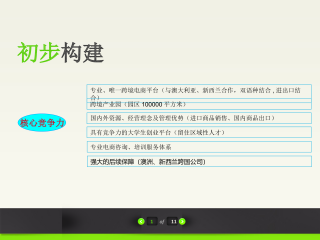
 2025-01-09 27
2025-01-09 27 -
跨境电商方案范文VIP免费
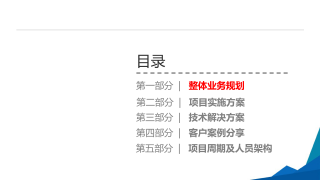
 2025-01-09 14
2025-01-09 14 -
创业计划书VIP免费
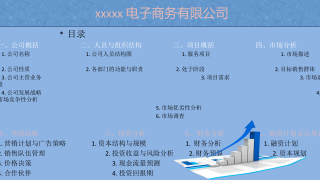
 2025-01-09 18
2025-01-09 18 -
xx生鲜APP计划书VIP免费

 2025-01-09 12
2025-01-09 12 -
跨境电商创业园商业计划书(盈利模式)VIP免费
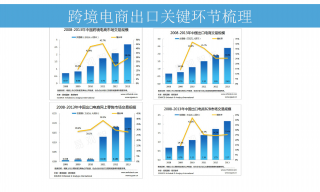
 2025-01-09 8
2025-01-09 8 -
跨境电商计划书VIP免费
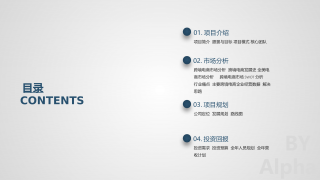
 2025-01-09 13
2025-01-09 13 -
绿色食品电商平台项目计划书VIP免费

 2025-01-09 22
2025-01-09 22 -
农产品电子商务商业计划书VIP免费
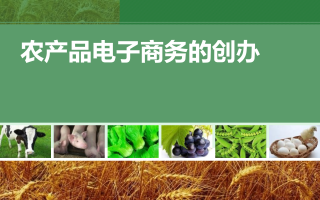
 2025-01-09 9
2025-01-09 9 -
农村电商平台商业计划书VIP免费
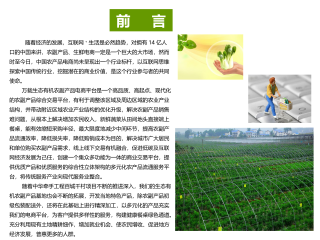
 2025-01-09 13
2025-01-09 13 -
生鲜商城平台商业计划书VIP免费
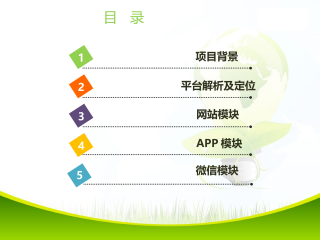
 2025-01-09 21
2025-01-09 21
作者:侯斌
分类:高等教育资料
价格:15积分
属性:96 页
大小:2.82MB
格式:PDF
时间:2024-11-19


